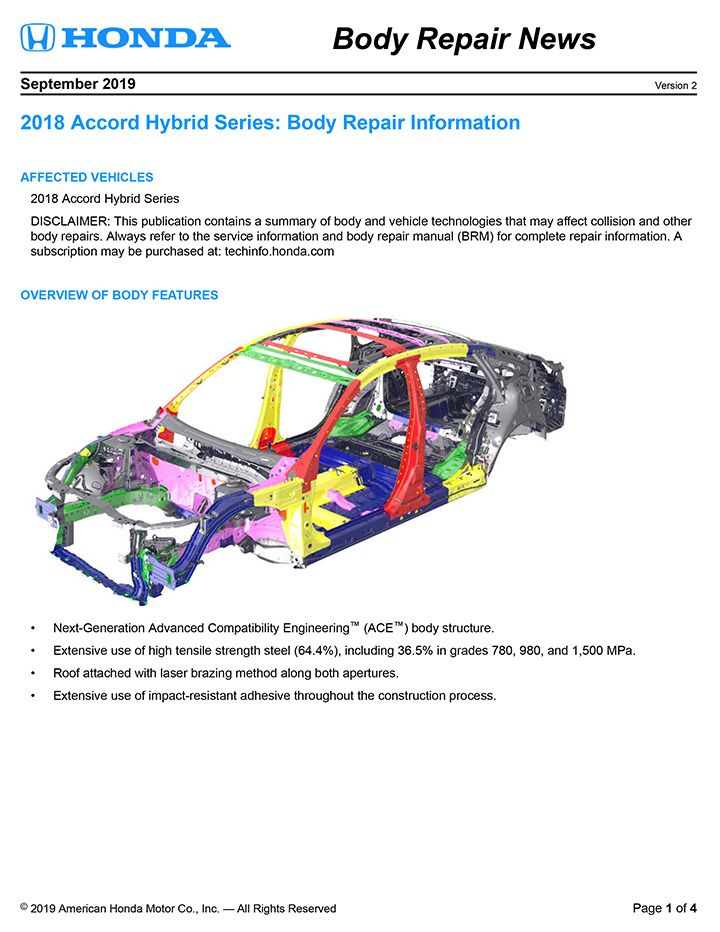
Honda Released The 2018 Honda Accord Hybrid Body Repair News Bulletin
- Posted on 10 July 2018
Honda released a Body Repair News bulletin for the 2018 Honda Accord Hybrid.
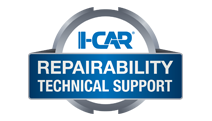

Honda released a Body Repair News bulletin for the 2018 Honda Accord Hybrid.
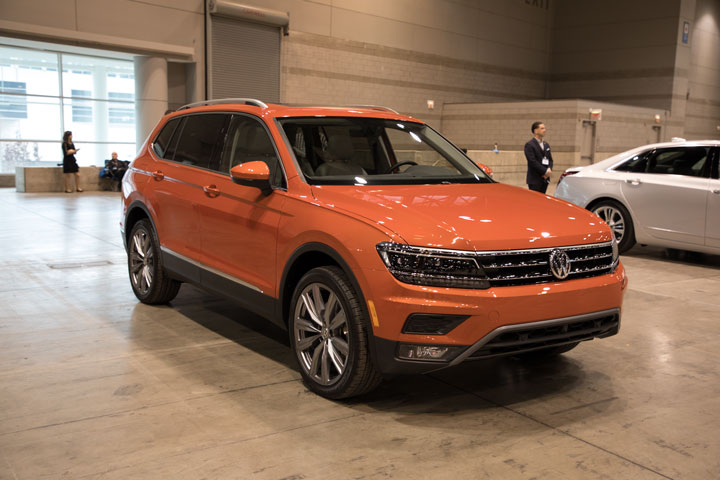
One of the top technical inquires received at Ask I-CAR is “Is there a sectioning or partial replacement procedure available?” To help answer this question, RTS has an OEM Partial Part Replacement Search available. Here you will find information on if these procedures are available on a specific vehicle. Let’s take a closer look at the Volkswagen Tiguan.

One of the top technical inquires received at Ask I-CAR, "Is there a sectioning or partial replacement procedure available?" To help answer this question, RTS has an OEM Partial Part Replacement Search available. Here you will find information on if these procedures are available on a specific vehicle. Let's take a closer look at the 2017 Chevrolet Silverado.
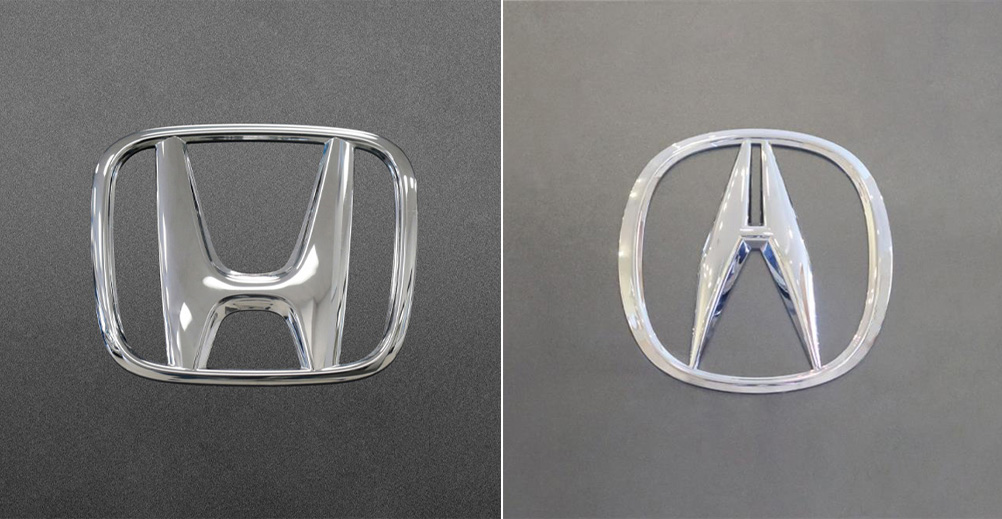
Honda and Acura use keyword searches to find repair information on the Service Express website. These keywords allow you to efficiently get to the repair information you are researching.
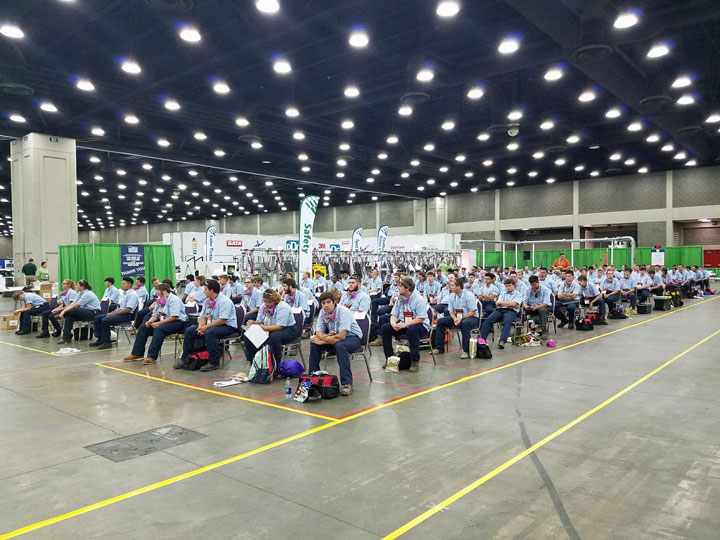
The 54th annual SkillsUSA National Leadership and Skills Conference took place June 25-29, 2018 in Louisville, KY. Every year I-CAR sends volunteers to judge the collision repair technology competition. Let’s take a look at this year’s results.
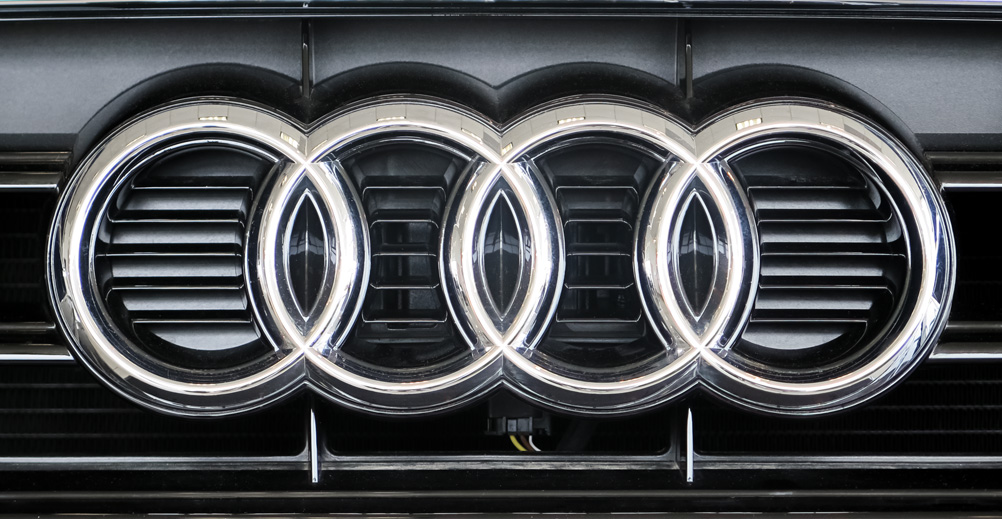
As part of the I-CAR Repairability Technical Support (RTS) OEM Linking Pin activity, we are helping to connect the collision repair industry to the vehicle makers. Recently we had a technical inquiry that asked, "The body repair manual does not specify the number of rivets needed in the replacement procedure. How many rivets are needed?" We reached out to Audi for clarification.
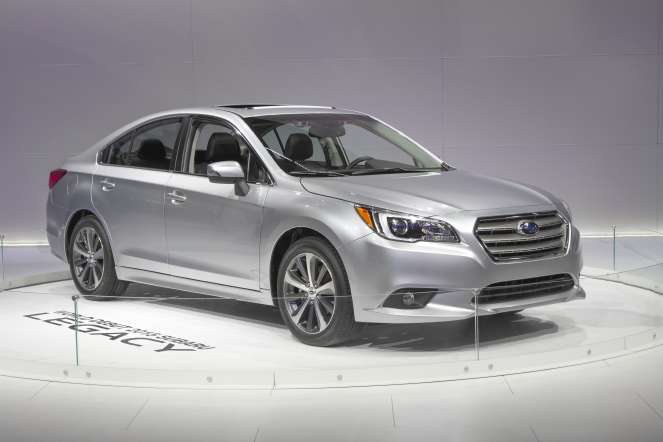
One of the top technical inquires received at Ask I-CAR, “Is there a sectioning or partial replacement procedure available?” To help answer this question, RTS has an OEM Partial Part Replacement Search available. Here you will find information on if these procedures are available on a specific vehicle. Let’s take a closer look at the 2017 Subaru Legacy.
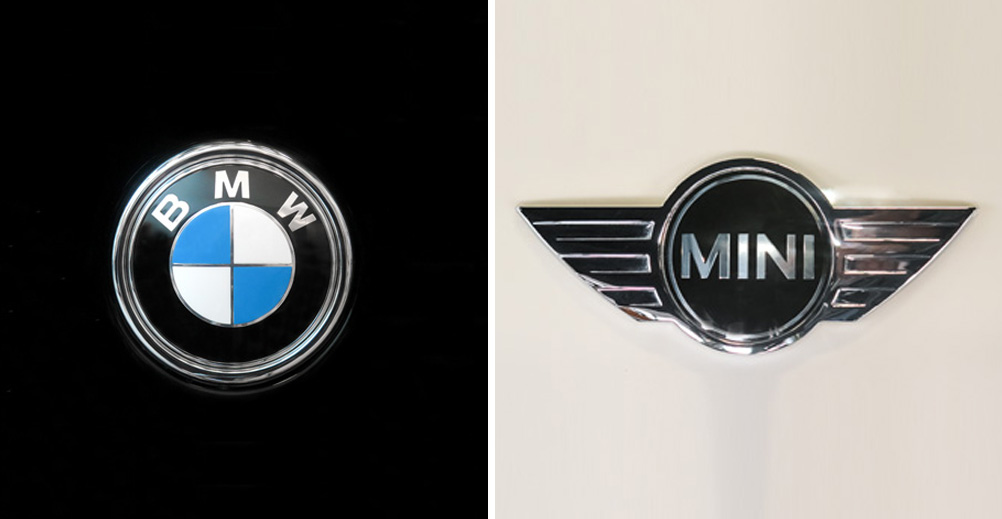
When it comes to repair information, no two vehicle makers are the same. Which is why it's critical to understand what you are reading in the repair procedure. Many OEMs provide links within the repair procedure that expand on what needs to be completed. Often, some related procedures may appear missing because they have to be accessed via a link within the main procedure. Let’s take closer look at BMW’s repair procedures.

As a collision repair technician, there is one part of a service manual that houses all of the information you would ever need…right? This is not the case with modern vehicles. You may be required to look in numerous manuals to find the information required to safely repair the vehicle.
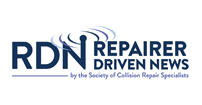
The all new 2019 BMW M850i is coming to America. The new 8 Series comes with some very exclusive features including an adaptive cruise control system that functions at speeds up to 130 mph. BMW describes the vehicles new easy out feature for parking. BMW states, “the vehicle can steer itself in reverse at up to 6 mph for 55 yards to help a vehicle out of a tight spot by retracing the car’s last movements in drive.”

Honda and Acura use keyword searches to find repair information on their Service Express website. These keywords allow you to efficiently get to the repair information you are researching.

The latest Infiniti INFINITI QX50 with the new 980-megapascal “Super High Formability” ultra-high-strength steel, is now available for buyers. Nissan is the first OEM to use this “previously unachievable” steel, and the 2019 QX50 is the first model to contain this type of steel.
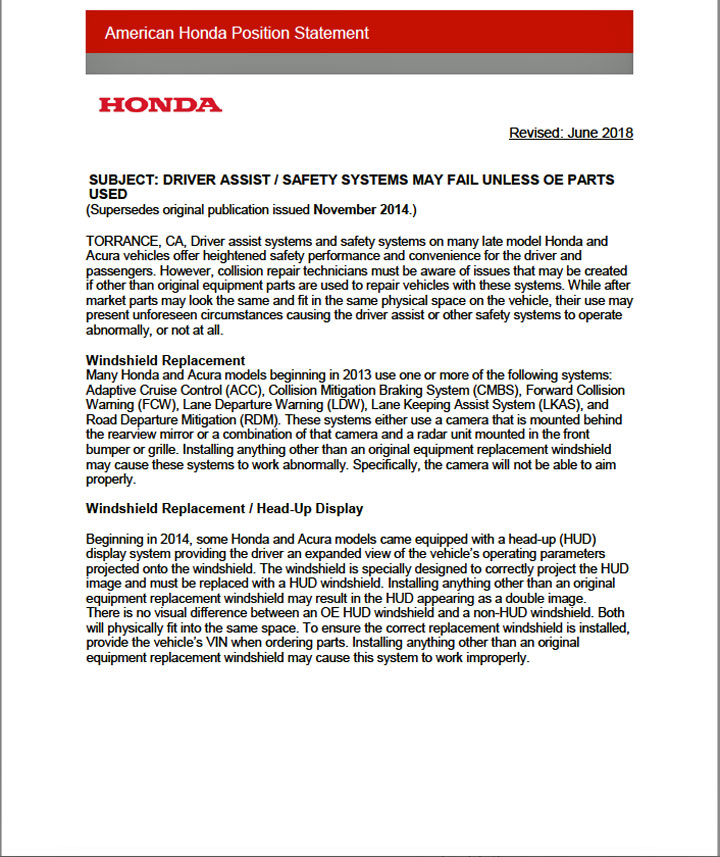
Honda and Acura released an updated parts position statement: Driver Assist / Safety Systems May Fail Unless OE Parts Used. This statement supersedes the original publication issued November 2014. Whereas the old position statement listed only a limited number of specific models, the new statement has been broadened to cover all Honda and Acura vehicles equipped with the options listed in the original position statement.
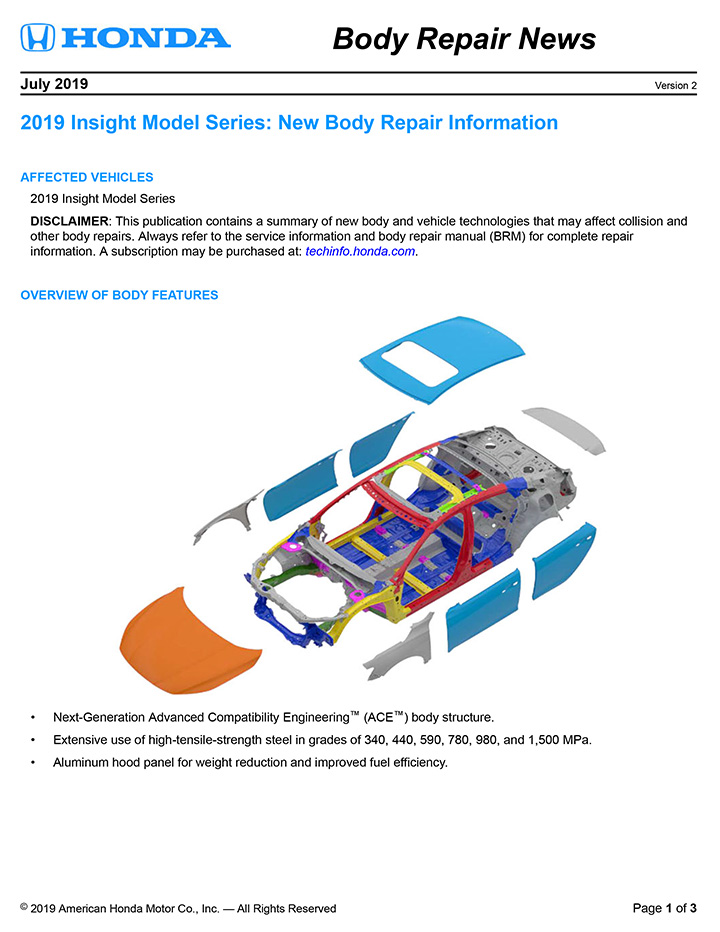
Honda released a Body Repair News bulletin for the 2019 Honda Insight.

Navigating OEM websites can be challenging when searching for collision repair procedures, especially as no two OEM websites are alike. What happens when you need to find other types of repair information, such as, "What needs to be inspected after a supplemental restraints system (SRS) deployment?", or "Does the tire pressure monitoring system (TPMS) require a scan tool or specialty tool?" Let's take a closer look at the FCA/Stellantis website.
As the industry continues to ask if pre- and post-repair system scanning is necessary, Toyota/Lexus/Scion provides their answer.
Are you wondering if a particular OEM or organization has a published statement on pre-repair and post-repair scanning? We have compiled a list of most of the statements on the subject, so you can...
Since advanced driver assistance systems (ADAS), scanning, and calibration first started becoming relevant, members of the collision repair industry have required as much knowledge as possible on...
Honda /Acura has updated their position statement on pre- and post-repair scanning to give more clarification on what is expected for scanning.
BMW has released a position statement related to pre- and post-repair system scanning. The statement applies to All vehicles equipped with on board diagnostics II (OBD II).
The I-CAR best practice article, Recycled Outer Quarter Panels w/Rolled Hem Flanges has gotten a lot of interest from the collision repair industry. It’s important to know which vehicles are...
As the industry continues to ask, are pre- and post-repair scans necessary, General Motors provides their answer.
Over the past few months, we've been sharing OEM position statements on restraints wiring repairs. Now we're bringing them all together in one place for easy reference.
FCA/Stellantis has released a position statement related to pre- and post-repair system scanning.
Technicians should be aware of what’s required to keep advanced driver assistance systems (ADAS) running safely after a collision. Whether that be aiming a camera, which can cause a system to not...
Nissan/INFINITI updated their position statement on pre- and post-repair scanning.
I-CAR now provides mechanical, electrical, and trim (MET) training for Jaguar Land Rover (JLR). This training is a new requirement for Jaguar Land Rover Authorized Collision Repair Centers.
I-CAR had a discussion on spot welder machine technology, setup, and maintenance.
Sometimes, going back to the basics can make the difference between a quality repair and a failed repair. Checking proper fit-up of exterior panels is vital for a successful repair when replacing...
Attending the SEMA Show in Las Vegas this year? Well, I-CAR will be providing many different opportunities to connect with you at this year’s show.
Ford has released the third installment of their On Target publication for 2025.
Are you looking for OEM emergency response guides (ERGs)? The Repairability Technical Support (RTS) team has located these guides and either houses them on the RTS website, provides links to...
Ford/Lincoln released updated position statements about repairing bumper covers on vehicles with advanced driver assistance systems (ADAS).
A simple bumper repair on a modern vehicle may not be as simple as it seems. New technologies like blind spot monitoring, adaptive cruise control, and other advanced driver assistance systems (ADAS)...
I-CAR has developed courses that provide an overview of collision repair and electromechanical repair for current Mazda vehicles.